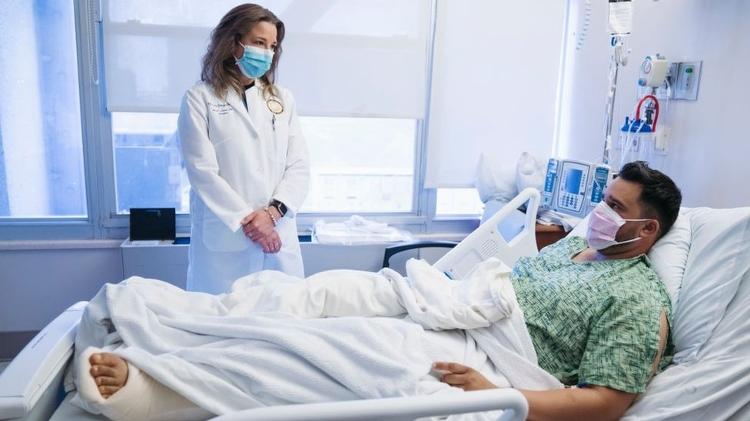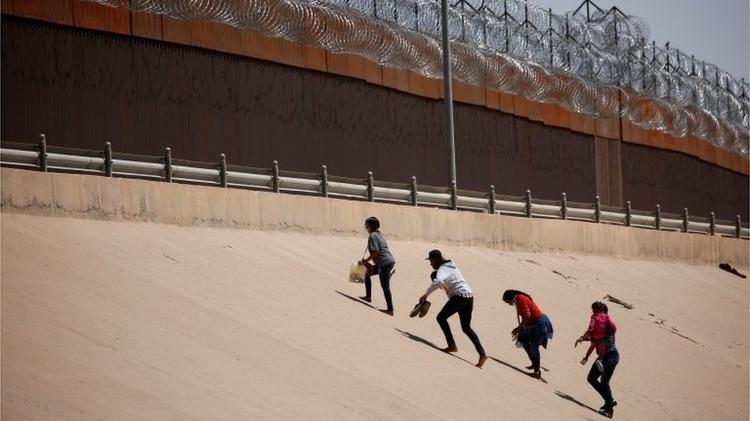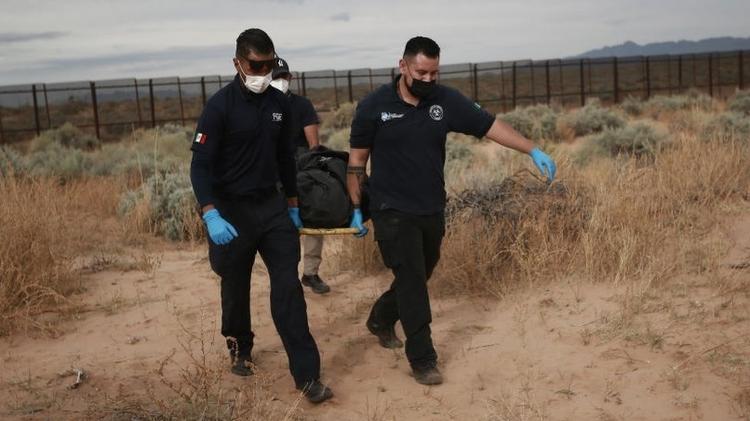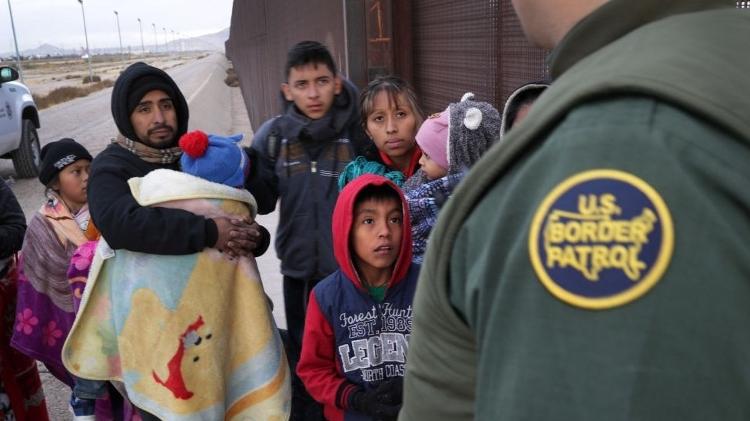While Héctor Almeida Gil was at the top of the border fence between the United States and Mexico, he suddenly saw several people desperately trying to climb.
The 33-year-old Cuban dentist was with a group of immigrants in the state of California trying to jump over one of the 9-metre-high barriers separating Mexico and the United States.
The fence is the longest fence on the border erected during the administration of Donald Trump, who said this “beautiful wall” he built would be “impassable”.
But many migrants try to cross the fence almost every day. Some do. Others get stuck with it, and an alarming number of people are seriously injured trying it.
Almeida Gil climbed the fence in late April with the help of a ladder commonly used by migrant smugglers.
When Mexican police approached the scene, several people ran up the stairs and the Cuban could only hold onto the railings to avoid a stronger fall.
He was a little “lucky” because he “just” broke a leg. But he saw one woman fall and break both limbs, and another man suffered a severe head injury.
Almeida was admitted to a hospital at the University of California, San Diego (UCSD), which has two counties that border Mexico and where 375 injuries and 16 deaths were recorded from 2019 to 2021, most of them wall fall victims.
According to a study led by UCSD’s Amy.Liepert, that’s five times more than between 2016 and 2018, and the equivalent of installing a 9-foot fence, which is more dangerous to climb than 3-5 meters in front of it.
“The most common injuries are fractures to the extremities, especially the legs. Usually these are pretty serious fractures, not simply a break in a piece of bone,” he explains to BBC News Mundo.
“Impeccable” Wall
Beginning in the 1990s, the U.S. government began building various types of barriers to the Mexican border.
One of the most common is a metal fence consisting of vertical bars installed in urban areas and some mountainous or desert areas in the states of California, Arizona, New Mexico, and Texas.
But there are points where there are no barriers, something Donald Trump has promised to replace with a taller wall than any other: “It’s nearly impassable,” he said as he allowed construction.
One of the models chosen was a 9-foot metal fence with metal plates on top, installed in the states of California and Arizona.
The barrier proved to be dangerous, although it proved to be insurmountable for migrants using more than 30 meters of stairs.
“What we found when we compared a six-year period was that there was a big difference between 2016, 2017, 2018 and 2019, 2020, 2021. In those first three years, we had 67 patients with traumatic injuries to the wall,” explains Liepert. was sick.”
According to Liepert’s research, 16 people have died on the California border in the last three years. And last April, a migrant in Arizona suffocated to death after hanging upside down for hours.
There have been no deaths in the last three years.
serious injuries
Liepert explains that the injuries seen in recent years have been less than minor and have equated to serious falls.
“The bones we see broken are usually in several places, and with many soft tissue injuries, this is consistent with a fall from a higher height,” explains the doctor.
“But we’ve also seen skull fractures and traumatic brain injuries, facial fractures, pelvic fractures,” he continues.
His investigation is about California, but Liepert said he’s heard of similar cases in other US border states. “Some data are starting to come in from other trauma centers. None of this has been published so far,” he states.
No research has been done on the Mexican side like the one published in late April in the scientific journal JAMA Surgery by Liepert and colleagues.
US Customs and Border Protection (CBP) did not respond when consulted.
According to the Washington Post, CBP has no record of the number of people injured trying to cross the border fence.
But the number of visa-free immigrants hit record highs in late 2020 and the first nine months of 2021, which often serves as an indicator of a wave of immigrants trying to reach the United States.
In fiscal year 2021, more than 1.7 million people were detained after crossing the border from 160 countries. Most were immigrants from Guatemala, Honduras, El Salvador, and Mexico.
For hospitals like UCSD, treating immigrants in trauma areas has become an increasingly unreimbursed expense to them.
“They don’t have health insurance, and most of them don’t have any self-financing. So they don’t have any insurance either. So I understand that a lot of care doesn’t pay off,” says the doctor.
source: Noticias




